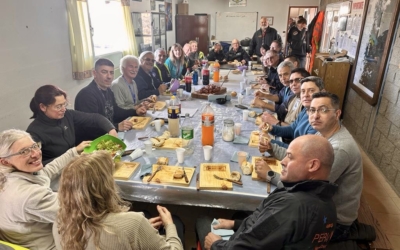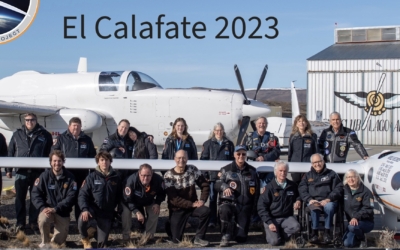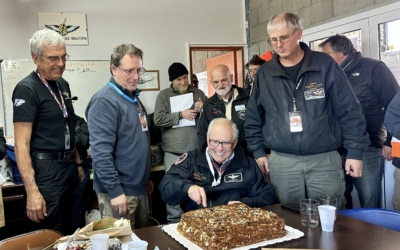Perlan 2 has a unique system to communicate with the ground. We call our ground station Cap Comm shortened for Capsule Communication. The software program was written by Tom Payne with Morgan Sandercock. Tom wrote a very robust program that could accept our in-the-field revisions without crashing the program. The Life Support System Display (LSSD) is seen in the cockpit and in CapComm. The flutter excitation data is also seen both in the cockpit and can be sent to CapComm. Photos are of CapComm on the day of the highest flight.
Michael Batalia explains telemetry:
Telemetry is the system we use to forward recorded measurements from the instruments onboard the Perlan 2 and transmit them to our ground station (CapCom). As you can imagine we make measurements from all types of instruments: the avionics, GPS, pressure sensors, temperature sensors, life support, etc. All of this data can be directed to the Perlan 2’s onboard radio transmitters and transmitted to the ground station in a continuous stream of data packets. At the ground station, we receive this data stream and display it in different ways to support the pilots and the flight. The Virtual Cockpit that Loris programmed is an excellent example of one way we display and use the data. In this case we use the GPS data to map the location of the glider while it’s flying, wind and speed data to display how fast the glider is flying and from which directions, altitude and other information. But we collect much more data than what is displayed on the Virtual Cockpit. There are numerous sensors onboard the Perlan 2, and we have a ground station console where we display details relating to life support, consumables, power usage, location, etc This is displayed on multiple monitors to allow CapCom the ability to monitor the state of the aircraft in real time to support the pilots and the mission. If CapCom sees an issue with the state of a sensor or a system, CapCom can radio the pilots and work with them to evaluate the needed response.
Currently we have two separate telemetry systems working between the Perlan 2 and the ground station. The first is dedicated only to life support and critical avionics data. The second transmits some of the life support and avionics data for redundancy, but is mostly used to transmit flutter data. We perform flutter experiments during flight to understand the nature of the Perlan 2’s dynamic aeroelasticity which is a fancy way of saying we are measuring how it vibrates while it’s flying. We have actuators and sensors in the wings which vibrate the Perlan 2 and measure the response. This generates a lot of data which we record onboard the aircraft and also transmit to the ground. Once at the ground station we can analyze the data and forward to other experts to determine if it is safe to go to higher altitudes.
Going forward we hope to be able to implement one more telemetry system; a system to transmit the video signals from the onboard cameras to ground. This will allow CapCom to visualize the Perlan 2 flight in real time, and it will be an awesome way to share the experience with our followers.




